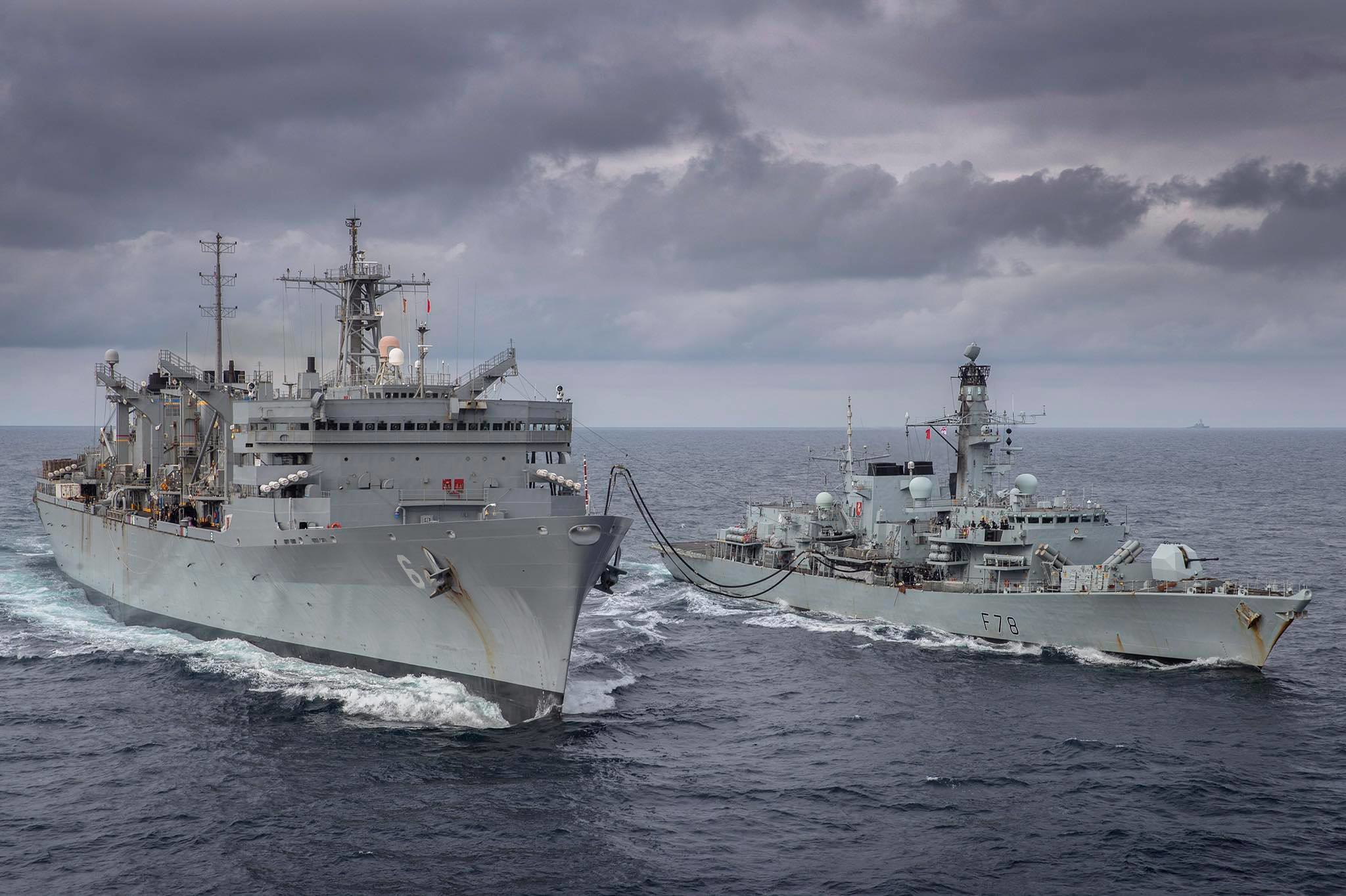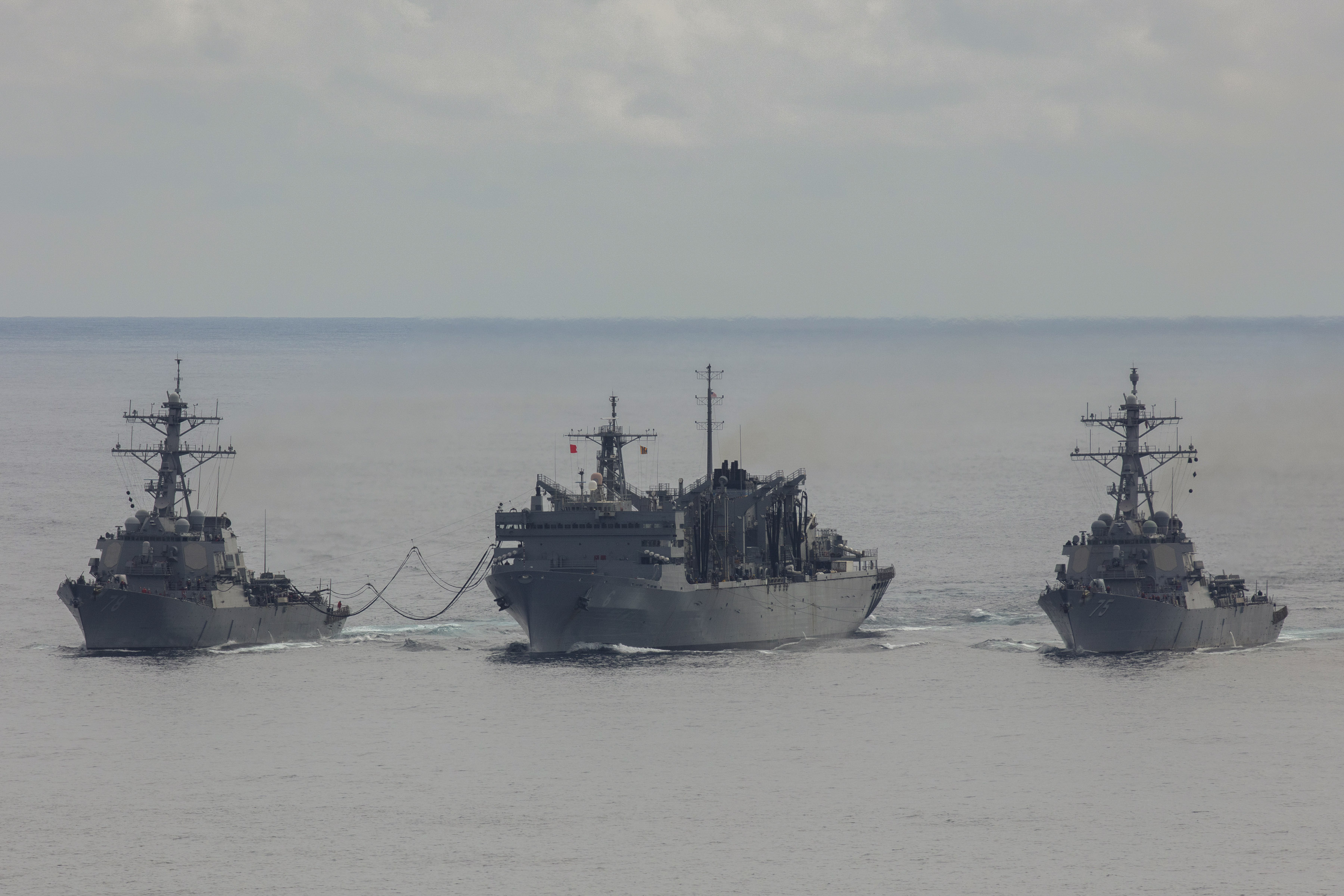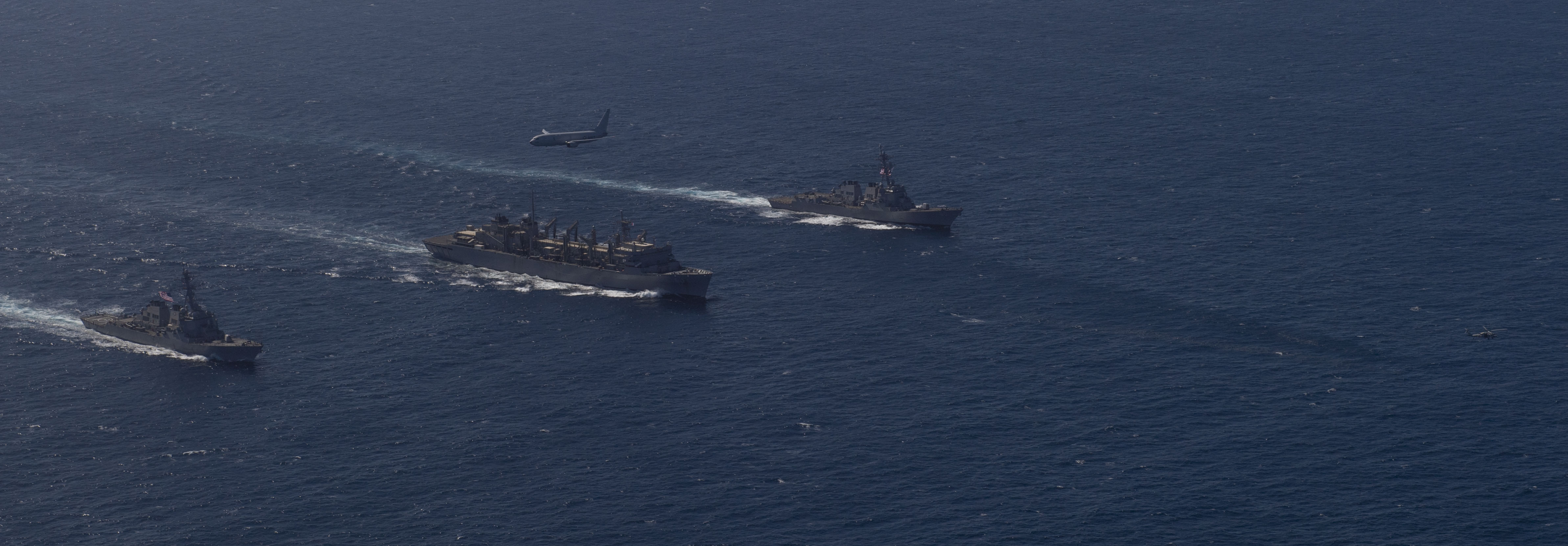
The U.S. Navy surface force is operating in the Barents Sea for the first time since the Cold War, further expanding its portfolio of Arctic operations by aircraft carriers and surface combatants in the past two years.
Three Spain-based Arleigh Burke-class Aegis destroyers – USS Donald Cook (DDG-75), USS Porter (DDG-78) and USS Roosevelt (DDG-80) – along with fast combat support ship USNS Supply (T-AOE-6) and Royal Navy frigate HMS Kent (F 78) are in the Barents Sea, north of Russia, to “assert freedom of navigation and demonstrate seamless integration among allies,” according to a U.S. Navy news release.
These operations follow anti-submarine warfare training and operations by these ships over the course of the past month.
“In these challenging times, it is more important than ever that we maintain our steady drumbeat of operations across the European theater, while taking prudent measures to protect the health of our force,” Vice Adm. Lisa Franchetti, the commander of U.S. 6th Fleet, said in the release.
“We remain committed to promoting regional security and stability, while building trust and reinforcing a foundation of Arctic readiness.”
The Russian Ministry of Defense was notified of the visit to the Barents Sea on May 1 in a bid to avoid misperceptions and inadvertent escalation.

Late last week, Donald Cook, Porter, Supply and Kent worked with a U.S. submarine and P-8A maritime patrol aircraft to conduct anti-submarine warfare drills above the Arctic Circle, after completing training together as part of the U.K’s Submarine Command Course (SMCC).
“For more than 70 years, 6th Fleet has operated forces across the region in support of maritime security and stability. Our regional alliances remain strong because of our regular operations and exercises with partner navies, and we welcome this opportunity to work collaboratively at sea, while enhancing our understanding of Arctic operations,” Franchetti said in a separate news release on the Arctic ASW operations.
“Our ships must be prepared to operate across all mission sets, even in the most unforgiving environments. This is especially critical in the Arctic, where the austere weather environment demands constant vigilance and practice.”
“One of the best attributes of our surface force is that we can aggregate at will, transitioning seamlessly from independent ships to coordinated operations,” Capt. Joseph Gagliano, the commander of Task Force 65 and Destroyer Squadron 60, said in last week’s news release.
“Our interoperability with our allies is so good that we can deploy multinational naval forces with minimal notice. That’s the real power of NATO.”

In 2016, Adm. James Foggo – who then served as 6th Fleet commander – warned in a Proceedings magazine article that the Arctic and the North Atlantic were contested waters in the Fourth Battle of the Atlantic, with an increased Russian submarine presence and a growing sophistication of those undersea assets.
Now in charge of all naval forces in Europe and Africa, Foggo said last week at the U.S. Naval Institute’s annual meeting that, “last fall, the Barents Observer reported 10 Russian submarines underway in the Arctic and North Atlantic at one time. That number would have grabbed the attention of Lieutenant Foggo at the height of the Cold War. The Barents Observer recently reported that five new Russian Yasen-class attack submarines—such as the Severodvinsk—will sail for the Northern Fleet once completed. The Russians are operating first-rate submarines. We still have an advantage in the undersea domain, but they are very good.”
After Foggo’s warning in 2016, the Navy has ramped up its Arctic presence. Two years ago, the Harry S. Truman Carrier Strike Group operated north of the Arctic Circle, marking the first time any surface ship had done so since the Cold War. Just days later, the Iwo Jima Amphibious Ready Group entered the Arctic Circle while participating in the NATO exercise Trident Juncture 2018. Though those efforts highlighted the difficulties of operating in such harsh climates, the Navy committed to operating more surface ships there to continue learning lessons, and ultimately last year U.S. 2nd Fleet operated an entire surface action group (SAG) out of Iceland.





